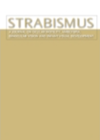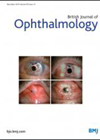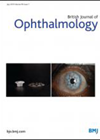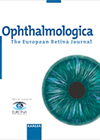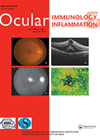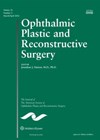Stereopsis in late strabismus correction
This prospective study evaluated effect of successful surgical alignment on improvement of stereopsis in 34 adults (15 female, 19 male) with childhood strabismus to determine the prognostic factors for sensory outcome. Fourteen cases were esotropic and 20 exotropic with mean...
Automated Bruckner device accuracy
The authors developed a Bruckner device, examined volunteers and determined the relation between the luminance of the red fundus reflex and eye rotation. Eye rotation was varied continuously both horizontally (-7 to 8 degrees) and vertically (five degree total range)...
Achieving post-op target range increases success of strabismus surgery in adults
This is a retrospective cohort study of all patients over 12-years old undergoing strabismus surgery under a single surgeon in a tertiary referral centre in Toronto, Canada. The aim of the study is to determine the role of achieving immediate...
Associations of esotropia with shunts
This study explored the characteristics and outcomes of children with esotropia and ventriculo-peritoneal (VP) shunt placement due to hydrocephalus. The authors conducted a retrospective study of 16 patients (nine female, seven male) aged three months to 5.6 years (mean 17...
Mental health issues linked with strabismus
The purpose of this study was to determine if adults with non-paralytic forms of strabismus are at elevated risk for developing mental illness. This was a population-based case-controlled study of 297 adults with new onset non-paralytic strabismus; 42.4% were male....
Intravitreal bevacizumab vs. ranibizumab in the treatment of macular oedema due to BRVO
This is a randomised, prospective, non-inferiority trial of 75 patients with macular oedema due to a branch retinal vein occlusion (BRVO) who received intravitreal injections of ranibizumab or bevacizumab after 1:1 block randomisation. This study is to measure the difference...
Retinal pigment epithelium tears
In this paper the authors review the current knowledge of retinal pigment epithelium (RPE) tears. Although rare these can cause loss of visual acuity. They can occur spontaneously in pigment epithelial detachment (PED) due to occult choroidal neovascularisation (CNV), retinal...
Froben for anterior scleritis
Flurbiprofen (Froben) is one of the nonselective cyclooxygenase (COX) inhibitors blocking both COX-1 and COX-2 pathways. Agrawal et al. undertook a retrospective cohort study to determine the effectiveness of oral Froben in managing noninfectious, non-necrotising anterior scleritis. One hundred and...
Anterior segment OCT imaging in cases of episcleritis and scleritis
The purpose of this study was to determine whether it is feasible to obtain good-quality images with anterior segment OCT (AS-OCT) in patients with episcleral or scleral inflammation located anterior to the equator, and whether this technique is able to...
Intravitreal triamcinolone for uveitic macular oedema
This paper from South Korea reports on a prospective, double blind, randomised clinical study designed to evaluate the additional benefit of intravitreal triamcinolone (TA) administration for noninfectious uveitic macular oedema as an adjunct therapy to systemic anti-inflammatory treatment. Patients were...
Ozurdex use in noninfectious uveitis
Burkholder et al. reported the practice patterns of 45 respondents of approximately 176 surveyed members of the American Uveitis Society regarding the use of the Ozurdex implant. Most respondents performed the injection in either a procedure (41.0%) or clinic (23.1%)...
Bleb-related changes in upper lid position
This is a review of five patients with upper lid ptosis or lid retraction secondary to large filtering blebs post-trabeculectomy. The authors review each case and apply a model to analyse the separate forces acting on the upper lid to...


